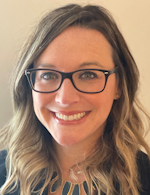Advocacy is a term you may hear a lot, but perhaps you don’t really know what it means or how you can get involved. Advocacy is defined as any action that speaks in favor of, recommends, argues for a cause, supports or defends, or pleads on behalf of others.1 It is important to note that not all advocacy is lobbying—advocacy efforts can take on many forms. While lobbying to legislators can certainly be a form of advocacy, it is not required. These are some other examples of advocacy:
- Organizing efforts to raise awareness of needed education or services
- Identifying and addressing barriers to care for vulnerable populations
- Education to colleagues, the public, and other appropriate individuals/stakeholders that can influence decision-making
- Testifying to local bodies when necessary
In public health, many times we find ourselves involved in advocacy in a very organic way, sometimes not being sure how we really got there. That is one of the many beautiful things about public health—we can have our hands in so many different projects and efforts all aimed at increasing access to care. Without strong advocacy efforts, advancing change is incredibly difficult.
Why advocacy is critical
We know that oral health directly impacts our overall health. However, we also know that those needing dental care the most are often the least likely to receive it.2 As dental hygienists, we are so well positioned to change this fact. By breaking down barriers such as cost and transportation, we can directly increase access to care for the most vulnerable populations in our country.
Other barriers include a shortage and maldistribution of dentists, deficient continuity of care due to inadequate interdisciplinary collaboration, low oral health literacy, and patient perceptions and misconceptions about preventive dental care.3 All these barriers, coupled with the fact that some state insurance programs do not include an adult dental benefit, are perfect examples of why advocacy is so important and how successful advocacy efforts can result in policy change and an increase in access to care.
It is the American Dental Hygienists’ Association’s (ADHA) position that oral health care is a right of all people, and hygienists must play a vital role in eliminating barriers to care.3 I believe that many of us can completely agree with this statement; however, in some instances our hands are tied by state rules and regulations. According to the Journal of Dental Hygiene, recommendations for increasing access to care require local, state, and federal stakeholders to combine forces that can take advantage of the existing dental hygiene workforce, utilize innovative delivery models, improve license reciprocity, reduce prohibitive supervision, and expand the dental hygiene scope of practice.3
How advocacy happens
One hygienist alone is not enough to make the big changes we need to see for these vulnerable populations. We need to come together as one loud voice. Networking is where it all starts. I look to RDH Under One Roof as an example. What an amazing time we all had together this year at the largest dental hygiene conference in the country. It’s networking and starting the conversation that gets the ball rolling. The next thing you know, you have hygienists across the country raising awareness, advocating, for change.
Also read: Tips for left-handed hygienists
Let me give you another example of advocacy efforts in my home state of Virginia. Our state insurance for adults, Medicaid, has never offered an adult dental benefit. They covered a limited exam and an extraction. Yes, can you believe that to be true in this day and time?!
I had the opportunity to attend a conference in Virginia where I learned about an organization, then called the Virginia Oral Health Coalition and now called the Virginia Health Catalyst. I introduced myself, started networking and finding out how I could get involved. This organization was committed to having an adult dental benefit added to Medicaid in our state of Virginia.
As you can imagine, this is no small feat. It took years of work and commitment. We sent letter after letter to our legislators. The Virginia Health Catalyst had its own staff working day and night on this initiative. We met with our legislators face-to-face to advocate for this benefit. I can happily tell you that it passed and went into effect July 1, 2021.2 Not only did it pass, but it is a full comprehensive dental benefit, probably one of the most comprehensive in the country.
This is one of many examples that hygienists across the country can share with you. You can start by getting to know if your state holds any type of annual oral health conference, and if so, go. See what they are talking about and what their annual policy initiatives look like. You can also find out who your local legislators are by visiting openstates.org/find_your_legislator. Get started by emailing them to introduce yourself.
A responsibility we all bear
Increasing access to care is a responsibility we all bear. Learning how to increase access to care for those who need it most is one of the most rewarding parts of being in public health, whether you are a hygienist providing public health dental services or working in an administrative position driving change at a policy level. Seeing someone have the opportunity to access the care they deserve is what public health is all about. Advocacy can help make that possible.
It is important to remember that in public health you are in it for the long haul. Change does not happen quickly. But anything worthwhile takes time, and that is certainly true in the public health and advocacy world.
I hope you have learned some new things that you can implement. Know you have a friend and colleague in this fight; please reach out to me anytime. All of the topics we have covered in this series are near and dear to my heart, and together we have the opportunity to change so many lives.
Read the whole series
Part 1: Public health and advocacy for the dental hygienist
Part 2: Fluoride and sealants: How these preventive tools are helping our pediatric patients
Part 3: Mobile, portable, and teledentistry’s critical role in public health hygiene
Part 4: The FQHC’s impact on our communities
Part 5: Building community connections to grow your outreach program
References
- What is advocacy? Definitions and examples. Alliance for Justice. https://mffh.org/wp-content/uploads/2016/04/AFJ_what-is-advocacy.pdf
- Adult dental benefit resources. Virginia Health Catalyst. https://vahealthcatalyst.org/adultdentalbenefit/
- Bersell CH. Access to oral health care: a national crisis and call for reform. J Dent Hyg. 2017;91(1):6-14.







